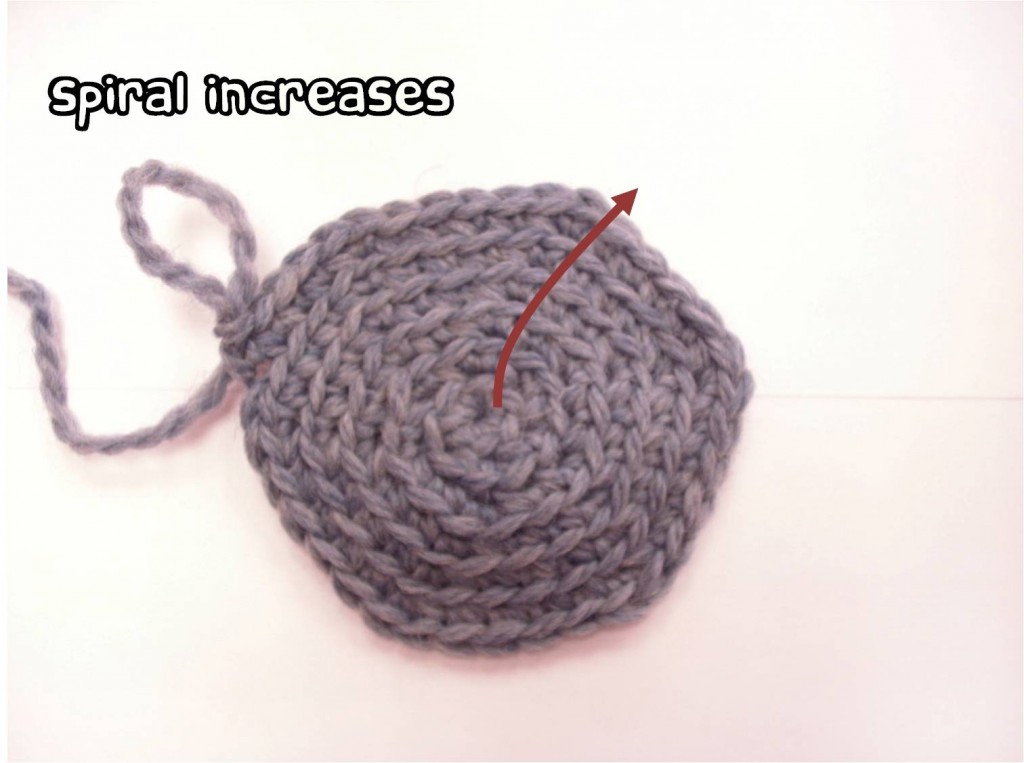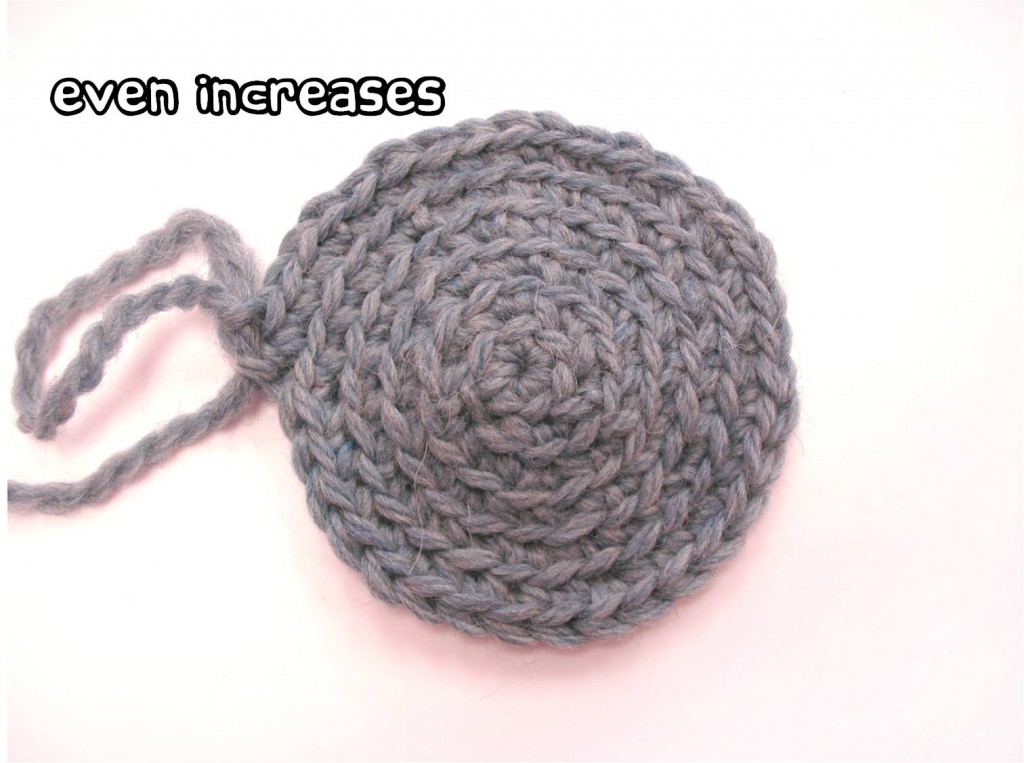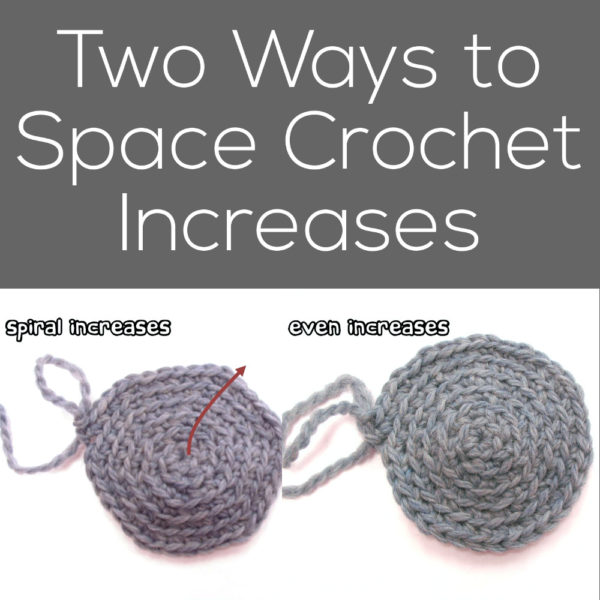Happy Tip Tuesday, everyone!
I’m going to chat about a topic that’s very important to amigurumi-making: increases. Why is it so important? Because almost every amigurumi requires that you increase! Today, I’m going to compare two popular ways to position your increases, so when you’re crocheting, you can pick the way you like best!
For this blog post, I’m going to assume that we are crocheting a piece in the round, using the spiral method- that’s going around and around without turning (if you don’t know what I mean, fear not! I’ll talk about the different ways to crochet in the round another day!). To increase, you simply crochet twice in the same stitch… but there’s more to it than that!
There are two basic ways to space your increases: spiral increases and evenly spaced increases. They give slightly different looks, and different folks prefer different techniques.
Spiral increases

One way to increase is the ‘spiral increase’ method, where you position the increases at the same spot in every round. Instructions for this type of increase typically look something like:
…
Round 4: [sc twice in next st, sc in next 2 sts] 6 times (24)
Round 5: [sc twice in next st, sc in next 3 sts] 6 times (30)
and so on…
In this technique, the increases occur evenly spaced from each other, and at the same spot every round, so you can see a spiral shape occurring (see the arrow in the photo above) with the increases.
Advantages to the Spiral increase technique
- The instructions for doing this technique are easy to write/read
- Because you are increasing at the same spot every round, you can eventually learn to increase without counting (yay!)
Disadvantages to the Spiral increase technique
- Only works well if you are making a simple circle (and not a more complicated shape)
- Some people don’t like the look that the spiral makes
Even increases

A second way to increase is to position the increases at random (but evenly distributed) around the round. Instructions for this type of increase typically look something like:
…
Increase 6 sts in each round for the next 4 rounds.
In this technique, the increases don’t occur in the same spot every round, so they become a less pronounced part of the design. Notice how this increase results in a more circular shape, as compared to the spiral increases, which make a hexagonal shape.
Advantages to the Spiral increase technique
- The instructions for doing this technique can be very condensed
- Because you only need to make sure to increase 6 times per round, counting isn’t very necessary
- Some people find the roundness more aesthetically pleasing
Disadvantages to the Spiral increase technique
- It can be difficult to make sure the increases are randomly distributed
- Although the instructions are short and condensed, they can be tricky to spell out, and can be tricky for beginners
What will you choose?
It’s a personal choice that’s up to you! I’m a spiral-increase kind of girl… what kind of increaser are you?
Best,
Stacey






Great tips – love that you’ve highlighted the advantages and disadvantages.
This looks far too advanced for my meagre crochet skills, but I’m totally remembering this for when I finally do manage to crochet more than just straight lines!
@Cheryl… it won’t be long! Circles are the next thing after lines 😉
Hi,
Can you please guide about increase stitch to make curl, ruffle or weave for clothes (such as dress) , what is the tip to measure how many stitches we need to increase?
Thanks in advance
To make a ruffle, you’ll need to increase every other stitch or every stitch. How much you increase depends on how much you want it to ruffle, so I would try a sample to see!
If you don’t like the hexagon shape but still want to space your increases evenly you can stagger them. Odd-numbered rounds follow the hexagon pattern, but the even-numbered rounds have the increases halfway along the ‘segments’ e.g.
Round 5: [sc twice in next st, sc in next 3 sts] 6 times (30)
Round 6: sc in first 2 st, then [sc twice in next st, sc in next 4 sts] 5 times, sc twice in next st, sc in last 2 sts
Hope that makes sense!
Thanks for that tip, Caroline!